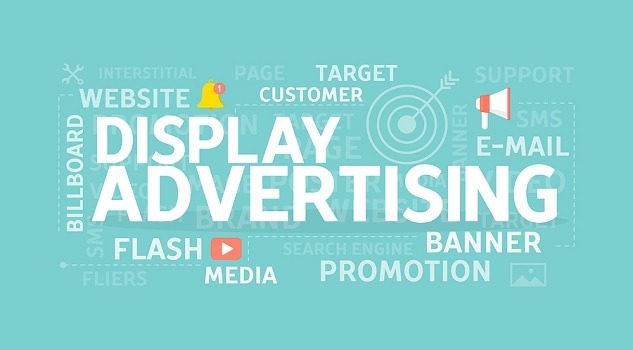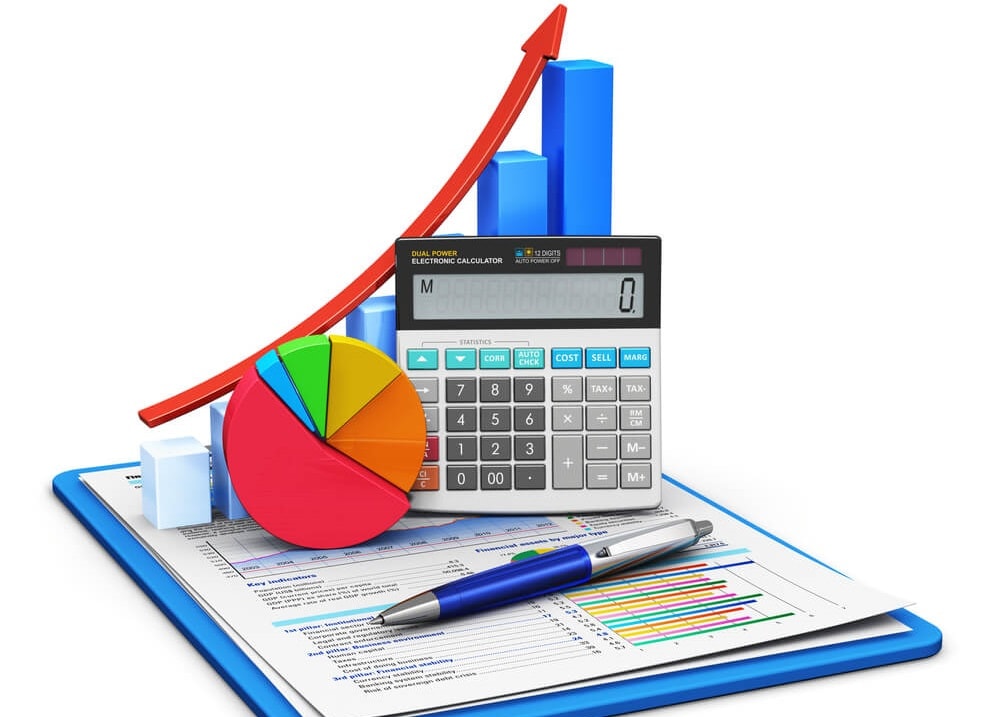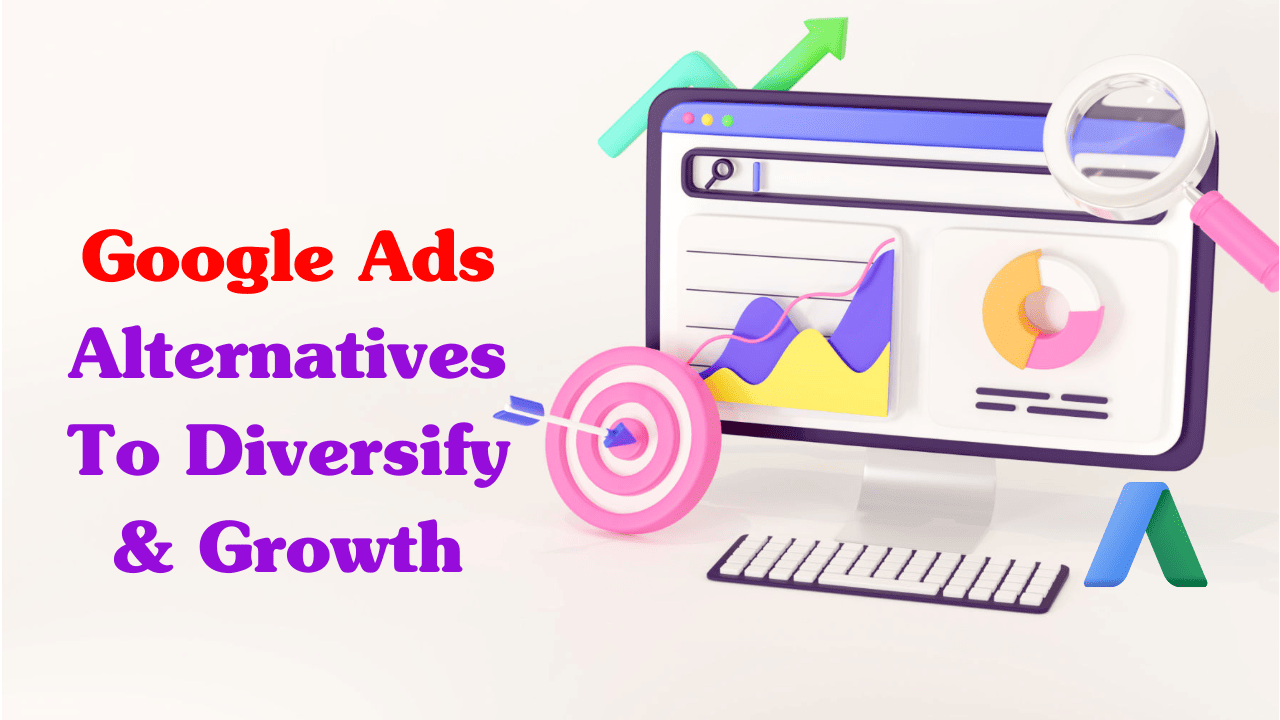Why is it important to stay updated with the latest display advertising trends? In a world of many different digital ad formats, it isn’t easy to know where to put your advertising budget. All the same, display advertising has strong potential that should not be underestimated.
As we expect many trends from previous years to flow over into 2025, the new year will bring new technology, market movements, and an even deeper focus on privacy.
In this article, we explore some of the biggest display advertising trends that are now holding the industry’s attention. These are some of the display advertising trends you will want to consider for your marketing campaign.

Display Advertising Trends to Watch for in 2025
Display Ads are a core advertising method for any marketer because they make up 12% of all web traffic. Here are the trends worth noticing this year.
-
Increased Spending on Display Ads
In 2022 alone, display advertising reached $63.5 billion USD. In the ongoing year, the display ad spend will finally outbid search advertising, and therefore, advertisers should be getting ready to scale up their investment in display ads throughout 2025.
What’s driving this trajectory? It includes but is not limited to the following reasons:
Rise of Video Advertising: Video advertising remains a force to reckon with, even as emerging formats gain traction.
The Significance of Video Ad Spend on Social Media: It is further estimated that social media video ad spending will reach the fantastic figure of $79.28 billion by 2025.
Programmatic Advertising: Programmatic advertising will also enable your brand to economize in this area of display ad spending across an assortment of different display channels.
A Mixed Bag: As could be expected, besides the above-mentioned types of displays, display ad spending should go primarily into social media, in-app, and influencer advertising.
-
Dynamic Creative
Despite the growing investment from marketers in display advertising, this advertising format comes with its own set of drawbacks. One such issue is the tendency for certain display ads to exacerbate the user experience, leading to the phenomenon known as “banner blindness.” To counter this, advertisers are progressively elevating their ad creation strategies by embracing dynamic creatives.
You may also like: The Basics of Business Advertising
Dynamic creatives involve taking consumer data and using creative elements that better resonate with the targeted audience. These creative components may vary from ad to ad but usually consist of a mix of text, imagery, and products featured.
There are a number of reasons why one would use dynamic creatives. For one, they blend well with a variety of social media platforms, especially Facebook, Instagram, and Snapchat. These sites offer endless options to build captivating ads that later increase conversion rates.
-
Multichannel Programmatic Advertising
While this might sound encouraging for the digital advertising ecosystem, the real challenge lies in acting with caution regarding how the investment is made. It is here that programmatic advertising becomes the solution, as it allows marketers to simplify the process of buying ad space using programmatic ads.
This automation lets you make prudent use of programmatic ad spend by sticking to the budgets yet reaping the best ROAS possible.
For businesses, especially SMBs, a clearly defined display ad budget is important. On average, 35-40% of an overall budget for SMBs is spent on various marketing activities, and incorporating programmatic advertising ensures these efforts remain within reasonable financial limits.
91.1% of ad spending to programmatics further cements this efficient methodology of ensuring you secure ROAS from investment.
The fast-evolving channels of advertising require enterprises to implement multi-channel methodologies of programmatic advertising, from social media to emailing prospects, from Google ads to in-app offers. At the same time, vigilant observance must be maintained so that ad overspending is avoided.
To help with this, a variety of tools, including MediaMath, exist for optimizing campaigns across multiple channels and display ad formats.
-
In-App Ads
Apps have been gradually replacing mobile websites, and this trend is likely to continue.
Among millennials, a remarkable 21% use an app over 50 times per day. This behavior has driven spending on app advertising up to $336 billion in 2022, which is expected to increase 14% Year-Over-Year (YOY). Therefore, it would be prudent for advertisers to shift their display budget to app-based ad campaigns.
Which apps should advertisers invest in?
The best bet is mobile advertising on social networking sites, for an impressive 99% of social network users access these apps. This will make optimization of display ads for mobile apps the conduit to the largest pool of customers.
However, your display ad spend shouldn’t stop there with social media apps. A whopping 59% of Gen Z use their mobile phone to entertain themselves. But here’s the thing: YouTube and TikTok are the most-used apps among this generation. Of course, aside from entertainment, Gen Zs use apps to play games and study.
You may also like: What Are the Main Types of Digital Marketing?
One can use a range of display ad formats across all these apps. For example, if the case is YouTube ads, one can choose to display image advertising.
Take the HelloFresh app as an example – its ad appears when users scroll through their ‘For You’ feed, providing access to YouTube users without requiring video ad uploads. Still, display video advertising remains a significant trend, which we will discuss next.
-
More Video Formats
In 2024, online videos remain a hit, and this scenario is very likely to continue into 2025, when an estimated 3.5 billion online video viewers will be recorded.
However, video advertising has gradually undergone some changes in the last couple of years. What are these changes? During 2024 and beyond, advertisers have to consider the type of video they use:
- Live-action Videos: An astonishing 68% of marketers are now using live-action videos.
- Screen-Recorded Videos: About 57% are leveraging screen-recorded videos.
- Animated Videos: Around 55% are using animated videos.
Why is live-action unique? Videos showcase real people, actions, and settings, making the advertisement more relatable. Since 86% of consumers would relate more to a brand with an authentic identity, live-action videos will help build a stronger level of trust between you and your audience.
Screen-recorded video ads are also effective depending on your brand. This is mainly because such videos are good for explainer and testimonial ads since they focus more on telling rather than showing. You can be able to convey your brand message without an enormous video production budget.
If your video ad budget is more substantial, consider delving into animated video ads. These videos offer both entertainment and information, effectively drawing and retaining viewers’ attention.
With the myriad of social media channels available, options for posting video ads have expanded.
However, advertisers should particularly focus on creating the following video ad formats:
- Rewarded Ads
- Outstream Videos
- Connected TV (CTV) Ads
- Bumper Pre-rolls
- Facebook and Instagram Ads
Why are these formats converting better? The correlation might be linked to the trend of in-app advertising. The more people who use social media apps, the broader your reach is.
Particularly, platforms such as Meta have numerous types of video formats and a broad advertising platform to work from. As large numbers of Gen Z would be doing mobile gaming, the nature of “rewarded” ads extra lives, or extra points starts to make much more sense.
Outstream videos will appear everywhere as display ads on blogs and news sites. They blend right into the textual content and steal the attention of viewers as they go through the articles. Since most viewers skip the ads on websites like YouTube, unskippable and short bumper ads are also becoming popular among advertisers for brand awareness.
You may also like: Types and Benefits of Affiliate Marketplaces
Finally, advertisers can expand their reach by using Connected TV ads. With 87% of adults in the US having a connected TV, CTV ads are an efficient way to get your ads in front of them as they watch content on whatever streaming platform they like best.
-
Contextual Targeting
One of the persistent problems that have faced advertisers in display advertising is the generally low click-through rate that advertising usually attracts. At an average CTR of only 0.1%, an advertiser has to be very ingenious if they have to capture the attention of prospective consumers.
One way to alleviate this worry is through contextual targeting. This is when ads are placed on certain sites that cater to the advertiser’s target market. More and more advertisers are seeing real results with contextual targeting, and it’s expected to reach $562.1 billion by 2030.
Besides, it is relatively easy to develop a contextual targeting strategy. Major advertising networks like Google Ads can facilitate the optimization of your campaign for contextual advertising.
-
First-Party Data
First-party data is a strategy that has been gaining momentum among advertisers to work around data privacy regulations. First-party data is information directly sourced from customer interactions, including website visits, purchases, app engagement, and other deliberate engagements.
First-party data has a good standing under privacy laws since it is collected with the knowledge of users and often with their consent. This practice has emerged in response to regulations such as GDPR and California’s CCPA, which reshape the landscape of data usage and collection, especially regarding third-party cookies.
Still, 75% of marketers use third-party cookies, which urges brands to shift toward collecting first-party data to strengthen their campaigns.
What channels does the customer use to source first-party data? Other than implementing a Pixel on your website or social media page, first-party data comes from:
- Surveys
- Customer Service Calls
- Chats online
- Reviews and Feedback
- Social Media
But most importantly, at the inception of first-party data collection, trust needs to be inculcated. Be very upfront about why customer data is being collected, and how that data will be used.
-
AR and VR
AR and VR are still on the edge of advertising, and they are pretty influential. By 2025, the market for AR and VR is going to reach $296.9 billion. Integrating these technologies into your advertising strategy promises a deeply engaging experience with your consumer base.
You may also like: What is Affiliate Marketing And How To Earn Money With It?
In display ads, the potential of AR and VR is limitless. Most importantly, for your customers, no additional technology, such as VR headsets, is needed to engage with your ad content.
-
Interactive Ads
In 2025, too, the reign of interactive advertisements will continue, especially in the area of interactive display ads. Interestingly, 81% of marketers believe that interactive ads are efficient in catching users’ attention and work effectively against banner blindness.
The canvas remains unbound for advertisers to unleash their creativity when it comes to interactive ads. Though polls, quizzes, games, and animations are common examples of ad formats that make a piece interactive, rendering an ad interactive is not limited to these ways alone; ad copy and visuals can also pave the way for interactivity.
-
E-Commerce Display Advertising
The year 2023 saw e-commerce sales go through the roof, reaching over $5.7 trillion USD. Since e-commerce has turned out to be very pervasive, online stores have numerous options for display advertising to suit various marketplaces.
Among these, Amazon is leading in the global e-commerce race with 1.1 billion visits. Sellers who publish their products on this platform should feel reassured that Amazon ads have a CTR of 0.36%.
Of the various advertising options provided by Amazon, Sponsored Display Ads are the most effective. Brands using these ads witness a remarkable YOY increase in sales of +15%.
Besides Amazon, no e-commerce company should overlook Google Shopping. Though Google Shopping does a great job of crawling organic listings and serving the best results on the SERPs, there is always a separate ad space at the top of the results. The average CTR of Google Shopping ads is 0.86 percent.
You may also like: Internet Marketing and Web Design Tips for 2023
Both Etsy and eBay work on a similar model of allowing sponsor products to display ads in search results, such as:
- With the incredible number of more than 7 million Etsy sellers, sponsored display ads are an easy way to increase brand visibility and sales.
- On eBay, with more than 133 million users, sponsored listings are an effective way to secure a top SERP position.
As far as how these various marketplaces distribute these ads, different as their methodologies may be, most of them essentially depend on keywords, geolocation, demographics, interest, and retargeting to personalize ad placements.
-
AI and Machine Learning
Finally, it’s worthwhile to discuss the influence of AI and machine learning on advertising today. Currently, 61.4% of advertisers are already integrating AI into their various marketing efforts.
Whereas business analysts like Neil Patel predict that someday AI won’t replace humans in any way, the advertisers themselves are using AI and machine learning for many different purposes.
Among the most impactful uses of AI is data collection and delivery: 40% of marketers use AI for decision-making activities. This is due in large part to AI’s ability to deliver insights including, but not limited to, budget allocation, performance metrics, and historical trends.
Advertisers also use AI to:
- Create ad creatives
- Find and segment target audiences
- Optimize ad performance
Although AI-driven ad creation features are among the top uses of AI, some concerns arise. Sure, AI can help create unique, branded ads filled with relevant keywords, but this may also raise some potential copyright issues. Using ChatGPT to write ad copy, for example, could inadvertently yield uncreative and inaccurate text.
-
More Privacy
Of all the concerns, however, privacy continues to be a top concern in advertising: fully 99% of consumers believe that privacy is important when it comes to their browsing experience online.
To address this, many countries have implemented different types of privacy laws, and one of the most well-known is Europe’s GDPR.
How does this shape up in the landscape of the marketing world? Advertisers and marketers face the challenge of their inability to collect consumer data using traditional means, for example, third-party cookies. As a result, a majority part of consumer and audience data is lost.
You may also like: Six Reasons to Use Online B2B Marketplaces in 2022
To adjust, advertisers are rearranging their budgets to account for these changes in data privacy, specifically when it comes to running mobile ad campaigns. Many are shifting to first-party data collection instead – to which we will come in a bit.
Additionally, there is also increased alignment of conversion and attribution tracking tools with privacy regulations. This allows reporting on a variety of metrics in a user-data-friendly way.
Privacy concerns also apply to businesses, especially in terms of ad fraud. This is a scam in which cybercriminals impersonate businesses and earn money through fake ad clicks. Ad fraud costs businesses $120 billion every year. Fortunately, Google is updating its system to automatically offset this type of fraud.
-
5G Technology
In 2019, 5G technology was launched by telecommunication companies around the world. Currently, 5G is rapidly becoming the norm for mobile devices. As more and more people jump on the bandwagon and networks continue to expand their coverage to include this technology, estimates suggest that 290.5 million devices will have 5G capability.
The advent of 5G means quicker internet speeds, culminating in a much better user experience. For advertisers, the benefits of 5G are multifold; the high-speed connectivity and low latency open up a whole new world of more sophisticated and less intrusive display ads.
So, how can advertisers harness the potential of 5G-enabled display ads?
The faster loading times provided by 5G open up doors to increased creativity. Live streaming, gaming, augmented and virtual reality (AR/VR), and even short film advertising are about to get a lot more popular.
You may also like: How to Strategize Your Affiliate Marketing Approach as a Content Creator
Worth noticing is that some groups of people would have a more favorable approach to 5G usage, and advertisers should adapt accordingly. These groups are families, the young generation, and people in the high-income category, since these are the people who would most likely embrace 5G technology.
Be sure to use these Display Advertising Trends in Your Campaign
2025 is just around the corner, and your competitors are gearing up for their display advertising in the coming year. For this reason, it is vital to align yourself with the latest trends in display advertising so that you channel your ad budget into a strategy that yields optimal results.
Trends to adopt include AI and machine learning, dynamic creatives, and the rise of 5G. Meanwhile, other trends that have been running for the last couple of years, such as programmatic ads and in-app advertising, will make a comeback.
By applying these trends to your next display ad campaign, you’ll be well-placed to have an edge in the changing landscape and set yourself up for success in the coming years.
Would you like to read more about Display Advertising Trends 2025 related articles? If so, we invite you to take a look at our other tech topics before you leave!
Use our Internet marketing service to help you rank on the first page of SERP.










